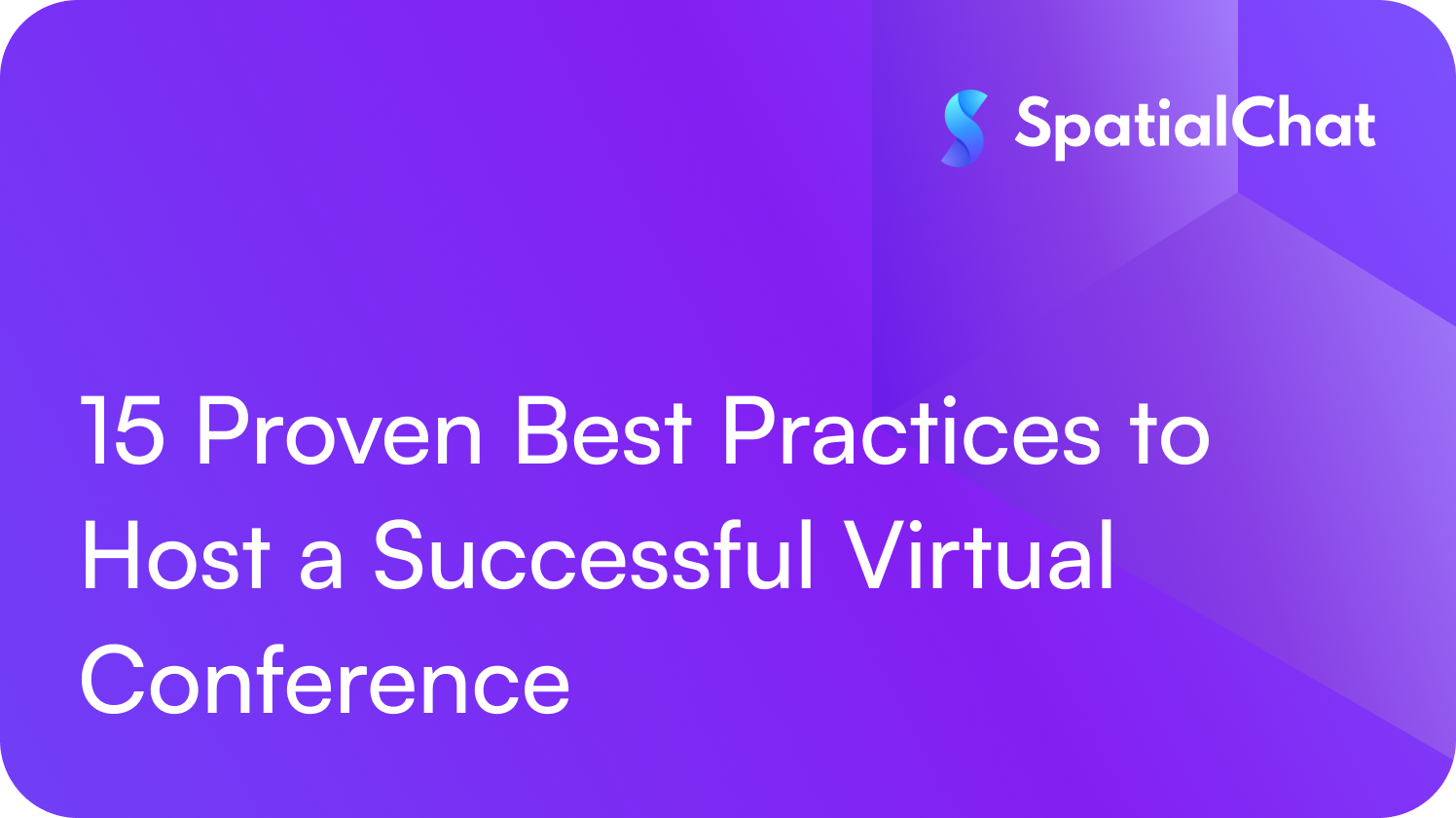The global health crisis accelerated a transition we weren’t quite prepared for—moving from a predominantly physical world to an increasingly digital one. Among the many industries affected, the events industry experienced one of the most dramatic transformations. Yet, it was also one of the quickest to adapt. Almost overnight, event organizers pivoted to online platforms, embracing virtual conferences as a viable and sustainable alternative.
Once seen as opportunities to gather like-minded professionals in person, conferences have now evolved into dynamic virtual experiences. And for many, these online formats have become more than just a temporary fix—they’re a powerful, scalable way to connect, engage, and deliver value.
While transitioning to virtual might feel like a necessary compromise, it doesn’t mean the experience has to be any less impactful. With the right strategies and technology in place, what was once a “need of the hour” can easily become an “opportunity of a lifetime.”
Virtual Conference Best Practices: 15 Actionable Tips for 2025
1. Define Clear Business Objectives
Whether your goal is to reach a wider audience, generate qualified leads, or increase profitability, align your entire team around clear, measurable goals. Setting KPIs and tracking ROI will help guide your decisions and gauge your event’s success.
2. Be Specific About Your Event Topic
Clarity is key. A well-defined theme and straightforward messaging will help attract the right audience. Let attendees know exactly what knowledge or value they’ll walk away with.
3. Choose the Right Event Platform
Engagement is everything. Opt for a platform that supports text, audio, and video interactions to foster real-time collaboration among attendees, speakers, and sponsors. Don’t forget to ask about social media integration to help amplify your event’s reach.
4. Expand Your Reach Beyond Borders
Remember that keynote speaker you always wanted but couldn’t invite due to travel constraints? Now’s your chance. Virtual conferences break geographical barriers, giving you access to top-tier speakers and global audiences that may have been out of reach before.
5. Educate Your Stakeholders
Virtual conferences may be gaining traction, but they’re still unfamiliar territory for many. Help your team, sponsors, exhibitors, and attendees feel confident by sharing brief tutorials or walkthrough videos. Demonstrate how to access sessions, use interactive tools, and navigate the platform smoothly.
6. Promote Strategically
Leverage your social media channels and company website to generate buzz and drive registrations. Tailor your messaging to highlight key speakers, session topics, or exclusive content.
7. Schedule Timely Reminders
Busy schedules and digital overload can cause even the most interested registrants to forget. Send well-timed email reminders with clear details—date, time, and direct access links—to ensure your attendees show up prepared and on time.
8. Share a Clear Agenda
Publish a detailed session agenda ahead of the event so attendees can plan their time and prioritize the topics they care most about. Displaying the schedule prominently on your landing page helps boost transparency from the start.
9. Offer Alternatives to Video
Global audiences mean varying internet speeds and tech access. To accommodate connectivity issues, always provide audio-only options so attendees can still participate even with limited bandwidth.
10. Assign a Skilled Moderator
Not every expert is a natural presenter. A trained moderator can keep the energy up, guide discussions, field questions, and run live polls—ensuring sessions stay interactive and focused.
11. Encourage Two-Way Interaction
One-way presentations can easily lead to disengagement—especially when attendees are tuning in from the comfort (and distraction) of their own homes. To keep energy levels high and attention focused, include interactive elements like live Q&As, polls, or breakout rooms at the end of each session.
12. Gather Feedback and Valuable Data
Every attendee interaction is a learning opportunity. Use surveys and post-event feedback forms to understand what worked and what didn’t. At the same time, collect attendee data—such as contact info, session preferences, or event metrics—for lead nurturing and CRM integration.
13. Record Your Sessions
Don’t let all your effort disappear after the event wraps. Record every session and repurpose them for post-event engagement, future content marketing, or even lead generation. Your content can live well beyond the conference date.
14. Test Your Tech Ahead of Time
Run a full tech rehearsal before the event goes live. Check audio, video, screen-sharing, platform navigation, and interactive tools to ensure everything works seamlessly. A small test can save you from big issues on the actual day.
15. Ensure Reliable Technical Support
Glitches happen—but panic doesn’t have to. Make sure your virtual event service provider offers a responsive support team that’s available in real-time to troubleshoot issues and answer questions. Your audience experience depends on it.
Final Thoughts
Shifting from in-person to virtual conferences might seem daunting at first, but the benefits far outweigh the initial adjustment. From broader reach and reduced costs to interactive sessions and reusable content, virtual events offer unmatched flexibility and results.
By following these proven best practices, you can turn a temporary solution into a long-term opportunity—and host virtual conferences that are every bit as effective as their physical counterparts.
So gear up—it’s time to master the art of virtual conferencing! Book a free demo today and see how you can create seamless and impactful virtual events from start to finish.
